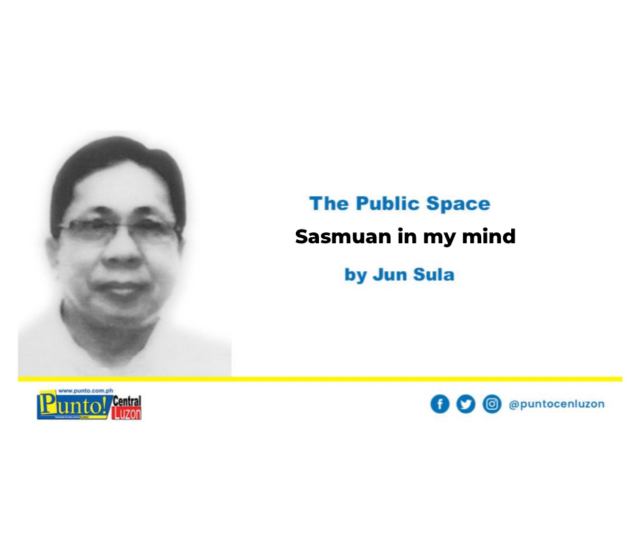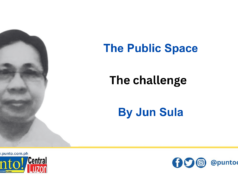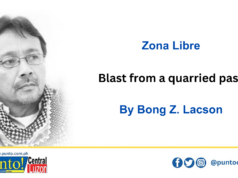UNTIL OTHERS tell us what we uniquely, richly possess as huge natural gifts to cherish and care for as much as we can, we seem to take them for granted.
That is truly the case of the Sasmuan wetland that, recently Ramsar, an international environmental group , cited it for its international importance to global environment. Until then, our focus is probably on something else for its present value, like the Pinatubo sand quarry, rather than on natural resources of lasting, even existential, benefits for a great many.
We have more of Sasmuan-like natural treasures in our midst but are not too aware of them because somebody , somehow, some days is goofing on the job, or grossly distracted by the huge bonanza from the aftermath of a disaster that took place a long time ago.
The temporal and urgent is prevailing over the permanent and important, a costly mistake that the management guru Stephen Covey has warned those in governance, both public and private.
The Sasmuan wetland, which reportedly covers a mangrove-rich area or nearly 4,000 hectares, isn’t exclusive to the small locality alone. It enriches not just the second district to which it belongs (isn’t this a geographic anomaly trumped by political objective?) but the whole of Pampanga, Central Luzon, the Philippines and planet Earth. In light of former President Gloria Macapagal Arroyo’s developmental plan for the province, a redistricting of the province based on their ecological similarities may have to be considered, given the climate change and other relevant issues. Existential is a constant, needling relevant, recurring word.
The Ramsar citation is consistent with an old advocacy in the Time magazine that told us way back that the environment is not something we inheritedfrom our parents but borrowed from our children. The punch line: selfishness can come from neglect and carelessness over what we have. Christianity has a meaningful word for it: stewardship
In the time of the late Gov. Bren Z. Guiao, not an environmentalist by any stretch of imagination, we used to visit two Sasmuan island barangays , Batang I and 2 via the wetland from Masantol. That was the fastest route, though not the safest, as the mangrove fringes could be potential ambush nooks. That was before Mt. Pinatubo exploded in its worst – recorded fury in 1991.
When lahar began flowing into rivers and other channels in Pampanga, we didn’t take the wetland route anymore. We could now walk on water, as it were, as siltation connected the two island barangays to Sasmuan proper. I understand that is still the case today.
That raises a big question. What happens to the millions worth of desilting efforts and quarrying activities, presumably undertaken over decades, itfailed to restore the island barangays to their natural state, being a part of the vast wetland? This, too, must be looked into, by the House of the Representatives or the Senate, considering its global importance. Because if the Sasmuan wetland is lost, forget about the aquaculture district of the province where Sasmuanshould properly belong. Remember the domino effect? If this would lead to gerrymandering, so be it. Small price to pay for something of lasting value in exchange for losing the next election. They also serve who run and lose this way.
On the heel of the Ramsar stamp of recognition, Candaba is again making noises about its own merit as an environmental treasure. Looking back, the Sasmuanspot was overshadowed by Candaba as the home ofwinter-escaping migratory birds, a pet project of former Mayor Jerry”John Loyd” Pelayo. The comeback kid Rene Maglanque is on his path to re-launch it. It seems that way, notwithstanding the political signs in the background.
The Clark Freeport Zone is also a known destination of migratory birds, not just of Chinese and Koreans. There was time when the president of a star-studded hotel talked about its efforts to keep the birds’resting ground unmolested. It was supposed to be a zone-wide advocacy. Maybe GMA can also put that on her plate as Duterte’s adviser on flagship projects in Clark. Those in the know can be tapped to be nosy about whose migrating where. Birds can also be spies. With China’s coast guard not too far away, we can’t be complacent.
On the other hand, government needs to look into how quarrying is affecting our environment, from wetlands to farmlands, rivers to coastal areas. The late Levy P.Laus once projected the provincial governmentwould earn billions from the lahar sand for many years. He was proven right. He was not a prophet, just a businessman with foresight. He, however, failed to factor in his projection the potential loss as result of quarrying, which has accelerated the conversion of rich farmlands into idle real state in what is now referred topopularly as land banking. Talahib and other tall grass have taken over where corn and palay used to colorwide farmlands with brown ears and golden grains. Of course, quarried sand has covered rich fertile soil. Guess who’s reaping the windfall?
The Ramsar citation is timely wake up call. For the Sasmuan wetland as well as for other environment treasures that time seems to have forgotten. Or we have, leaders and citizens, by default.





